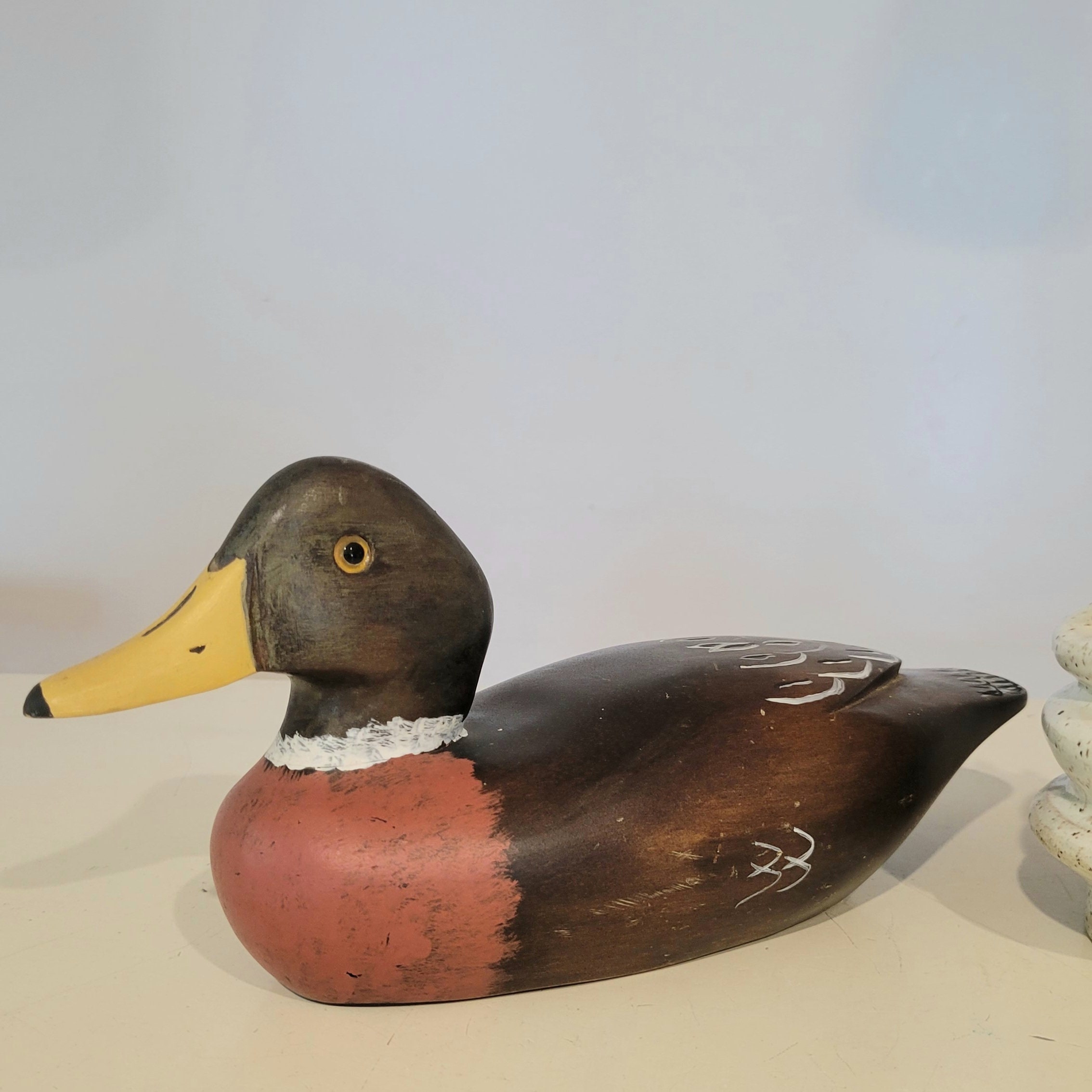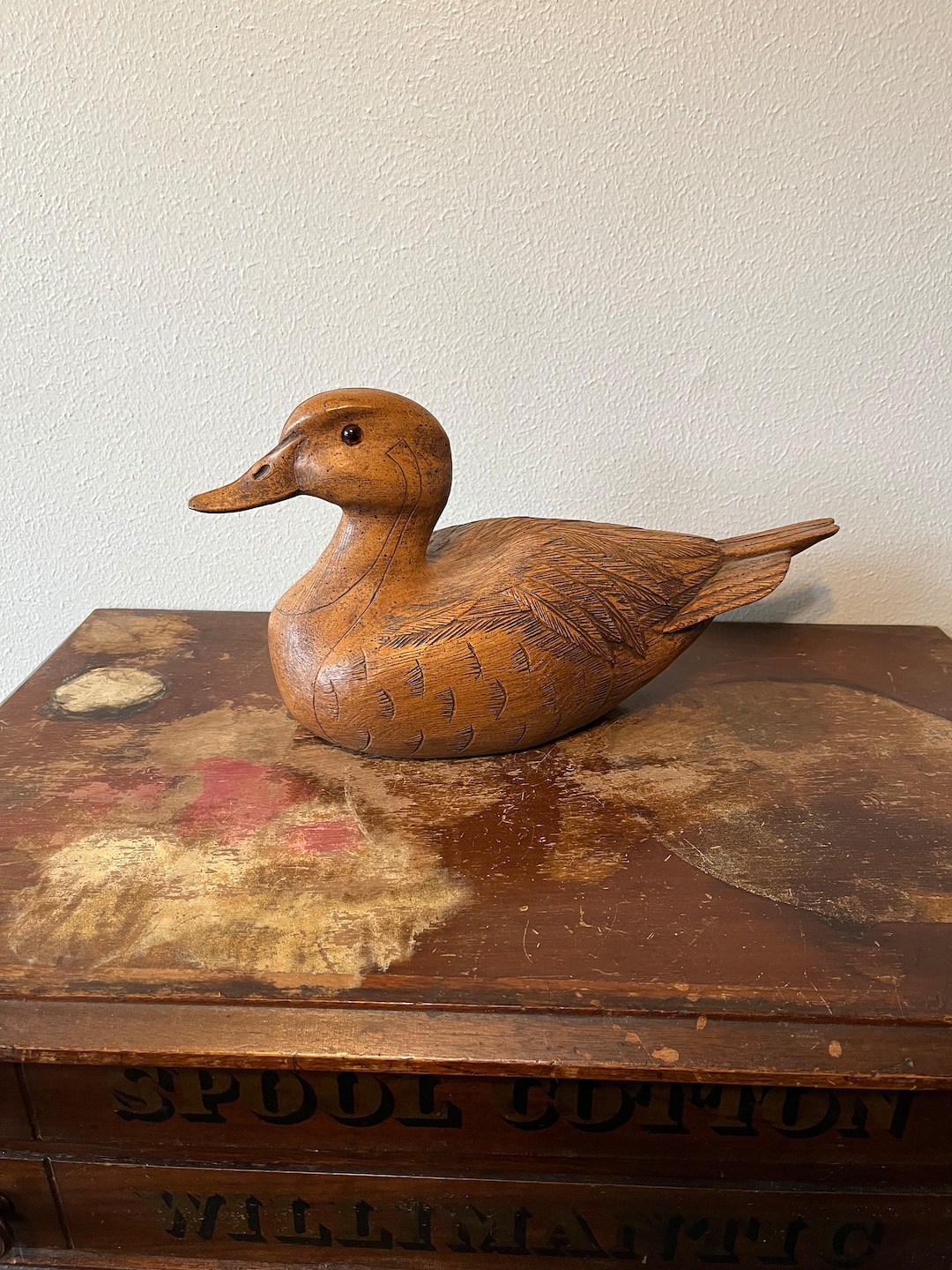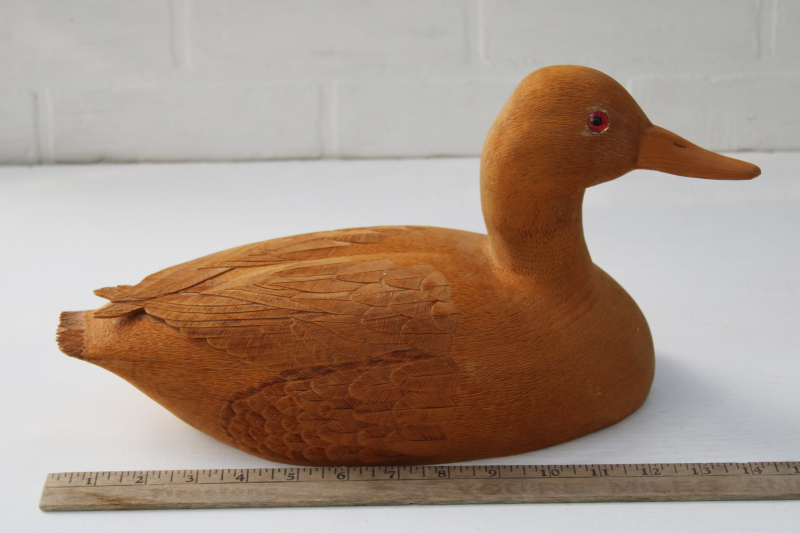Unearthing History: The Enduring Charm of Vintage Wooden Duck Decoys
Vintage wooden duck decoys represent a rich piece of American heritage. These handcrafted artifacts are more than hunting tools. They are cultural touchstones. Collectors globally seek these items. Each vintage wooden duck decoy tells a story. It speaks of skilled artisans. It reflects a bygone era. This article explores their history. It delves into their craftsmanship. It guides potential collectors. Discover the lasting appeal of these remarkable pieces. Vintage wooden duck decoys hold significant historical value.
The Origins of Decoy Making
Decoy crafting has deep roots. Indigenous peoples used natural materials. They created early forms of decoys. These attracted waterfowl. European settlers adopted the practice. They recognized its effectiveness. Early decoys were purely functional. They needed to be durable. They needed to be lifelike. This was crucial for successful hunting. These early pieces laid the groundwork. Modern vintage wooden duck decoys descend from them. The tradition evolved over centuries. It became a specialized craft. Demand for effective decoys grew.
From Necessity to Art Form
The 19th century saw decoy making flourish. Market hunting created high demand. Hunters needed many decoys. They needed them quickly. Artisans began specializing. They developed unique styles. Different regions had distinct characteristics. These often reflected local bird species. They also showed carving traditions. Functionality remained paramount. Yet, aesthetics gained importance. Decoys became more refined. They showed incredible attention to detail. This transformation was gradual. It elevated the decoy’s status. It moved from tool to artistic expression. Many vintage wooden duck decoys from this period survive.
Master Craftsmen and Regional Styles
Certain carvers became legendary. Their work defines collecting today. Names like Elmer Crowell are revered. A.E. Crowell, Massachusetts, set high standards. His decoys are exceptionally rare. They command high prices. Charles Perdew from Illinois made significant contributions. Joseph Lincoln, Massachusetts, also left a legacy. Each carver developed a signature style. This makes identification possible. It adds to their appeal. Knowledge of these masters is vital. It helps authenticate pieces. It enhances collection value.

Identifying Key Regional Characteristics
Decoy styles vary greatly by region. The Atlantic Flyway produced robust decoys. Chesapeake Bay decoys often feature hollow bodies. This made them lighter. It made them more buoyant. New England carvers preferred solid bodies. They used durable woods. The Midwest saw distinct styles emerge. Illinois River Valley decoys are famous. They feature distinct painted eyes. They have refined feather patterns. The Pacific Flyway had unique needs. Its decoys reflected different bird species. Understanding these regional nuances is key. It helps in appraisal. It assists in collecting vintage wooden duck decoys. [See also: Regional Decoy Carving Traditions]
- New England: Solid, sturdy, often simple paint.
- Chesapeake Bay: Hollow, often very detailed paint, practical.
- Illinois River: Exaggerated forms, elaborate painting, distinct eyes.
- Upper Midwest: More rustic, often folk art appeal.
The Art of Collecting Vintage Decoys
Collecting vintage wooden duck decoys is a rewarding hobby. It requires knowledge. It demands patience. The first step is research. Learn about carvers. Understand regional styles. Study paint patterns. Original paint is highly prized. It adds significant value. Condition is another major factor. Minor wear is acceptable. Extensive damage reduces value. Provenance is also important. Knowing a decoy’s history increases appeal. It adds to its story. Always buy from reputable dealers. Attend specialized auctions. Visit antique shows. These sources offer authentic pieces.

What to Look For in a Vintage Wooden Duck Decoy
Several factors determine decoy value. Original paint is paramount. Avoid repainted decoys. Check for originality in the head. The head is often a separate piece. It should match the body. Look for maker’s marks. Some carvers signed their work. This adds to authenticity. Examine wood condition. Cracks, splits, or repairs affect value. Strong patination is desirable. It shows age and authenticity. Wear from use can be good. It indicates a working decoy. These are often more desirable. Each vintage wooden duck decoy is unique. Careful inspection is crucial.
- Original Paint: This is the most crucial factor.
- Condition: Minimal damage, no major repairs.
- Carver Identification: Known makers add value.
- Provenance: A clear history enhances appeal.
- Form and Anatomy: Lifelike proportions are highly valued.
Preservation and Care for Your Collection
Proper care ensures longevity. Vintage wooden duck decoys need stable environments. Avoid extreme temperature changes. Fluctuations cause wood to crack. Maintain consistent humidity levels. High humidity can cause mold. Low humidity can lead to drying. Store decoys away from direct sunlight. UV rays fade paint. They can damage wood. Dust regularly with a soft cloth. Do not use harsh cleaners. Waxing with a specialist wood wax can protect. Always handle decoys carefully. Avoid dropping them. Keep them out of reach of pets. Careful handling preserves integrity. It maintains their historical value. Every vintage wooden duck decoy deserves respect.
Displaying Your Vintage Wooden Duck Decoys
Display enhances appreciation. Choose a safe location. Showcase their unique beauty. Consider custom stands. These provide stability. They highlight the decoy’s form. Group similar decoys together. This creates a cohesive display. Use proper lighting. Accent lighting can emphasize details. Avoid intense spotlights. They generate heat. They can damage wood. Ensure adequate space around each piece. This prevents accidental damage. A well-displayed collection educates viewers. It shares a piece of history. It elevates the artistry of vintage wooden duck decoys. [See also: Creating an Engaging Decoy Display]
The Market for Vintage Decoys
The market remains robust. High-quality decoys fetch high prices. Rare examples set records. Auctions are primary selling venues. Online platforms also connect buyers. Interest continues to grow. New collectors enter the market. They appreciate the artistry. They value the history. This sustains demand. Knowing market trends is important. It helps in buying. It aids in selling. Price depends on many factors. Provenance and condition are key. Rarity also plays a role. The fascination with vintage wooden duck decoys endures.

Understanding Investment Potential
Decoys can be investments. The best pieces appreciate over time. They offer tangible value. Collectible markets have fluctuations. Research is essential before investing. Consult with experts. They offer valuable insights. Focus on quality pieces. Acquire authentic vintage wooden duck decoys. Diversify your collection. Don’t just buy one type. Consider decoys from different carvers. Explore various regions. This strategy reduces risk. It enhances long-term growth. Investment in decoys combines passion with potential returns. It is a unique asset class.
The Enduring Allure of Decoys
Why do these objects captivate? They connect us to nature. They recall simpler times. They embody human ingenuity. Each decoy represents dedication. It shows the skill of a craftsman. They are sculptural forms. They possess unique character. Their imperfections tell a story. They suggest years of outdoor use. They are tangible links to the past. They evoke a sense of tradition. The appeal is both aesthetic and historical. Vintage wooden duck decoys resonate deeply. Their beauty transcends mere utility. They are truly American folk art. Their legacy continues to thrive.
Future of Decoy Collecting
The future looks bright. Digital platforms increase access. New collectors are joining. Education is more available. Museums hold special exhibitions. They showcase masterworks. Awareness grows steadily. Online communities foster sharing. They provide resources. The passion remains strong. Future generations will inherit this legacy. They will appreciate these artifacts. The story of vintage wooden duck decoys will continue. It is a testament to human creativity. It honors nature’s beauty. This enduring art form will thrive.
In conclusion, vintage wooden duck decoys offer a unique blend of history, artistry, and investment potential. Their story is deeply woven into American culture. From their humble beginnings as hunting tools to their current status as cherished collectibles, these carved birds hold a special place. Understanding their origins, appreciating their craftsmanship, and knowing how to care for them ensures their legacy continues. Whether you are a seasoned collector or a curious newcomer, the world of vintage wooden duck decoys provides endless fascination. Dive into this rich history. Discover your next prized possession. Each piece is a testament to timeless artistry. It’s a valuable piece of the past.
